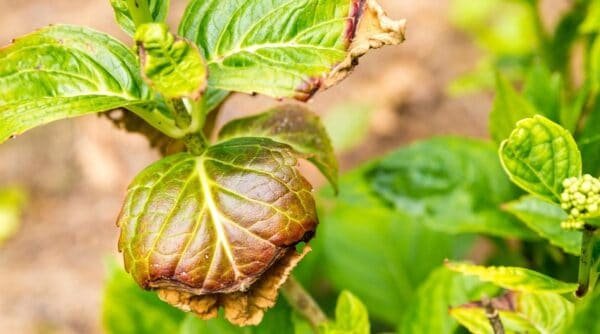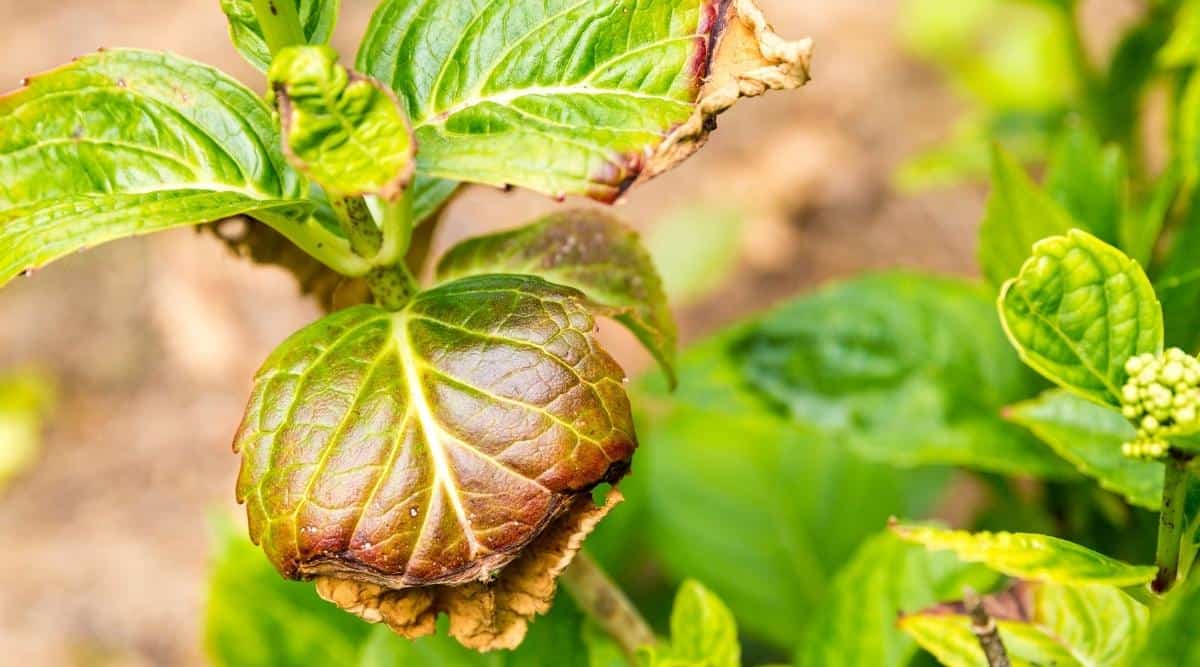
Are you growing hydrangeas this season but hoping to stay clear of some of the most frequent issues that hydrangea growers encounter? In this article, will go through each of the typical difficulties that hydrangeas might encounter after being planted, as well as how to avoid them.
Many of hydrangeas’ outstanding horticultural characteristics, such as their capacity to thrive in shade and their magnificent blossoms, are well-loved. Another factor is that once they have roots and are well-established, they require relatively little upkeep.
Although hydrangeas are hardy and tenacious plants, both inexperienced gardeners and seasoned green fingers have had issues with their hydrangeas. While there are numerous elements (planting site, geographic area, climate, etc.) that affect the issues you can experience, some issues appear to be more prevalent than others.
Fortunately for all of us, the majority of hydrangea problems we encounter may be quickly resolved without harming your lovely bushes. Let’s look at some of the most common issues that arise when cultivating hydrangeas. You’ll discover their causes, solutions, and some preventative advice!
Leaf Droppings
Any gardener may find it unnerving to see a hydrangea covered in leaves that are slanting downward. This is a very dramatic scene because of the big leaves.
The absence of water is most likely to blame for this. Especially if your plants are receiving too much afternoon sun, you will generally see these leaves drooping in the afternoon. Planting hydrangeas in moderate shade with four to six hours of morning sunshine is ideal. Hydrangea paniculata is the exception to this rule; while it prefers full light, it will still have drooping leaves if it is dehydrated.
A good watering can easily repair drooping hydrangea leaves. Avoid saturating the foliage of your hydrangeas with water while watering them. Fungal illnesses and other problems with the leaves may result from this. Water the plant by directing the hose at the plant’s base. It’s a terrific idea to water your hydrangeas with soaker hoses or drip irrigation if you have them.
Leaf Yellowing
When growing hydrangeas, gardeners frequently experience yellowing foliage. Yellow leaves can affect your plants for a number of reasons, most of which can be readily remedied if you deal with them in a timely manner. The following are typical reasons for yellowing leaves:
- Too much water
- Lack of Nutrients
- Soil PH issues
Flowers are not in bloom
Although this plant has wonderful foliage, most people cultivate it for its magnificent blooms. Being unable to see them blossom might be really frightening. There are two basic reasons why this could occur:
- Inappropriate Pruning
Your hydrangea was improperly trimmed. If you didn’t trim your old-wood blooming hydrangea until the spring or it was too late in the winter, you probably cut off the flower buds.
Bigleaf hydrangea (Hydrangea macrophylla), climbing hydrangea (Hydrangea anomala), mountain hydrangea (Hydrangea serrata), and oakleaf hydrangea are examples of hydrangeas that bloom on ancient wood (Hydrangea quercifolia).
Mildew on Leaves
You probably have powdery mildew if you notice that your leaves have a fuzzy white appearance. Powdery mildew can appear on any shade plant at times, but it is easy to treat. Many different fungi can produce powdery mildew. Although they require moisture to reproduce and are often more aggressive against plants that prefer shade, these fungi flourish in the sun. This fungus can spread if you overwater your hydrangeas and leave your landscape unkempt.
Leaves with Orange Spots
Because it differs from other leaf spots you could discover on hydrangeas, this one is simple to detect. Hydrangea rust manifests as orange dots on the underside or base of the leaves. The leaf will finally die when the top of the leaf becomes yellow. Another fungus-related disease that affects hydrangeas is this rust.
Try to avoid watering your hydrangeas from above when you are doing so. Hydrangea rust may be stopped before it has a chance to spread by watering the plant at the base.
The Leaf Edges are Brown.
Your leaves are most likely experiencing fertilizer burn if only the margins are turning brown. The leaves don’t actually get burned by this kind of fertilizer. Any plant that receives too much hydrangea fertilizer runs the danger of having its root system harmed. The first indication that this is happening is that the hydrangea leaves may start to look burned.
Dark Spots on the Leaves
Your plant has probably been exposed to one of several fungal infections if you notice dark patches on your hydrangea leaves. Because of their growth requirements, hydrangeas are vulnerable to fungus infections. Fungal spores thrive in the shade and moisture that they need to grow.
The majority of fungi are propagated by water splashing. A fantastic technique to stop the spread of fungal spores in your yard is to remove any leaves or other plant debris that could contain them. The remainder of your hydrangea plant may be safeguarded by removing the spotty leaves.
Punctures in the Leaves
Finding holes in the leaves of your hydrangea is a sure indicator that insects are nipping at it. On hydrangeas, Japanese beetles and caterpillars are frequently observed. Fortunately, these insects will just detract from the attractiveness of your leaves rather than seriously harm your plant.
You may either treat the hydrangeas with an insecticidal soap if you’d rather, or you can remove these insects by hand.
Violet Leaves
Many different hydrangea varieties have leaves that change to a variety of crimson hues in the fall, giving us something new to love about them. However, you should get a soil test done if you notice leaves that have completely gone purple.
If you have been attempting to alter the color of your hydrangea blooms, purple leaves may also develop. Phosphorus becomes inaccessible to the plant when the soil is excessively acidic. If this seems like something that may be happening in your garden, you might try raising the pH of the soil by adding garden lime.
Conlusion
When they are planted in the proper location, hydrangeas are cheerful and simple-to-maintain plants. These issues that were covered above are fairly typical and might affect anyone! The majority of these issues may be avoided by remembering to water your hydrangeas and maintaining weed-free, tidy beds. These issues may be quickly resolved with a little more care!

